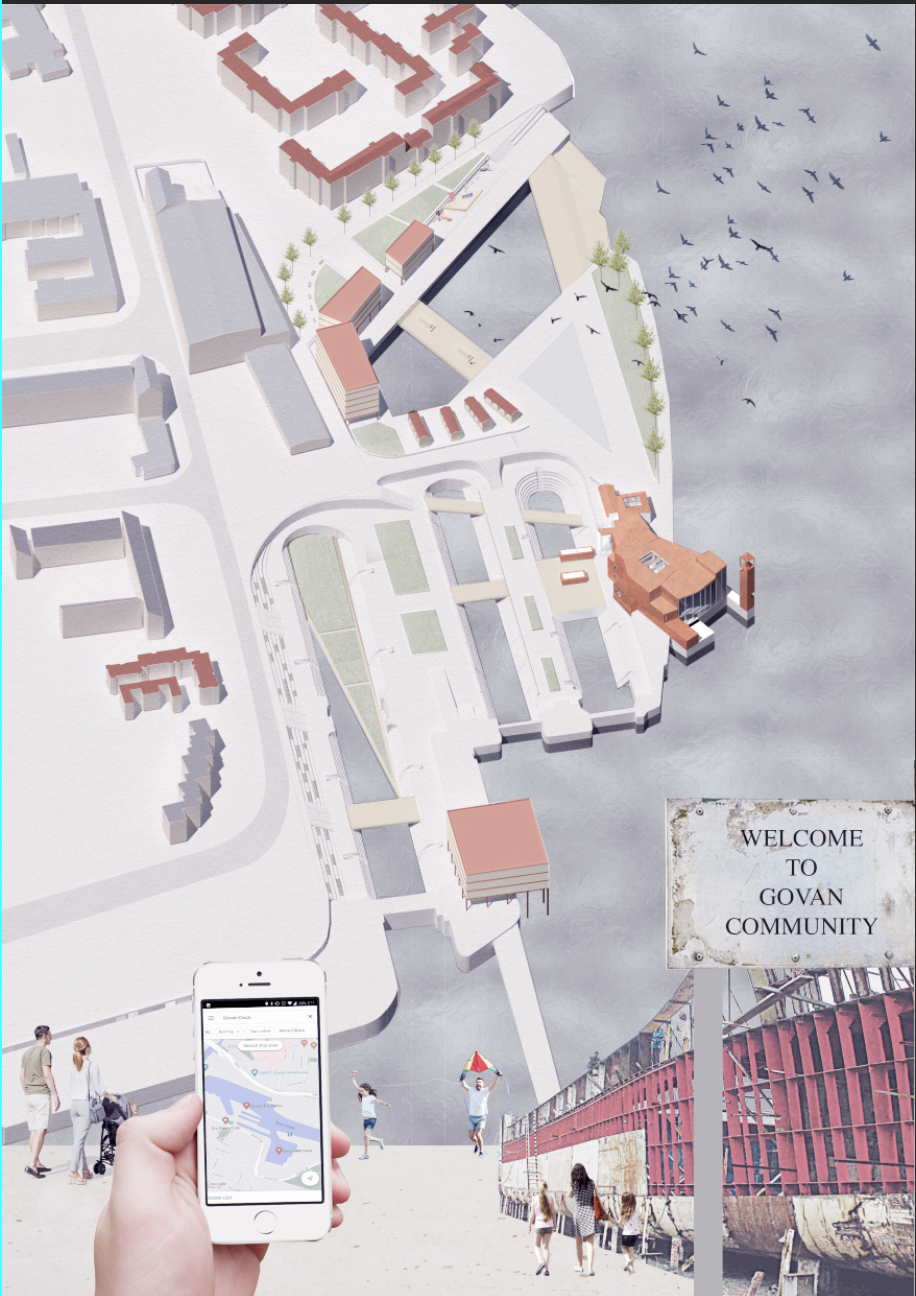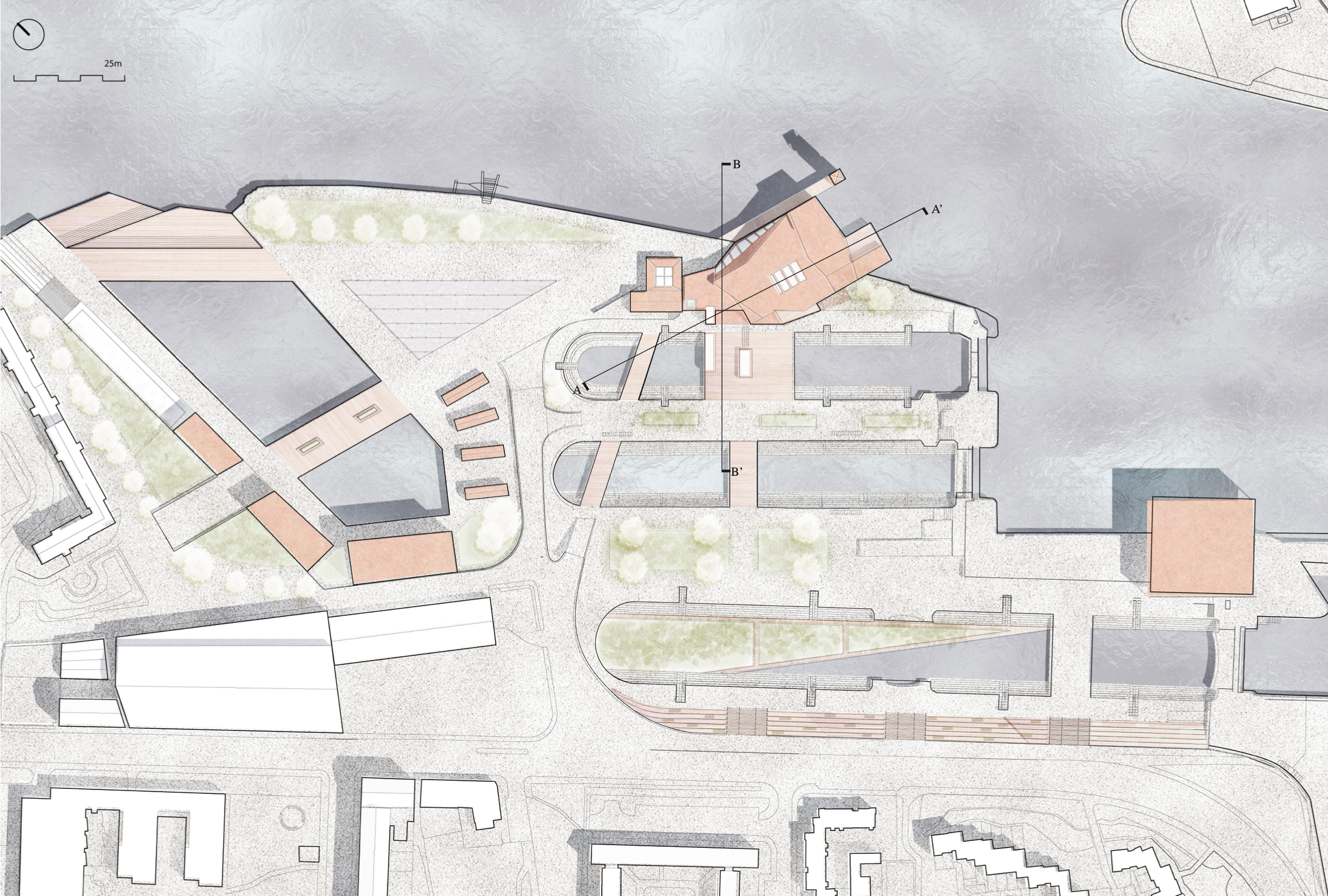Derelict land and loss of identity are the common sore points for post-industrial cities. The growth of these cities typically had a close relationship to the prosperity of their port area, hence creating a strong symbiosis between the two. The loss of industry has witnessed the hollowing out of cities. Many have lost their manufacturing industries and with them much of their economic independence, self-esteem and im-mediately recognisable identities and being alienated as a small wheel for the capital and corporate city. Glasgow, as one of the former European industrial centre, has been severely influenced by the de-indus-trialisation process since the 1960s. Compare to other cities with a similar historical background, Glasgow was not able to adequately adapting to the negative effects.
Govan Graving Dock, a famous dry dock for ship replacement, was chosen as the testing field of this the-sis. In recent years, the city’s development mainly focused on the economy and tourism around Buchanan street and its landmarks. Despite being only 20 minutes on foot from the new city centre, Govan has become one of the 20% areas that are deprived and disconnect to the city. This thesis seeks to heal the wound that created by the aftermath of the de-industrialisation, the derelict land of inhuman scale due to the change of focus of urban development, as well as the loss of identity and the sense of community in Govan.
Govan dock is enormous in scale for human, as it was focused on the scale of a ship during its original design.The waterfront regenerations of three other cities and the Nolli map of the Govan dock area have been studied during this thesis. This thesis proposed the solution by establishing a critique of the city and its relationship with the individuals and the heritage, hence create a counterpoint for the city and Govan. The proposed solution aims to preserve and bring the heritage to public use, both for the landscape of the dock and the pump house. The design scheme re-introduced human scale into the former industrial land without completely wiping out its history by creating new nodes, re-defining edges and designing routes, which helps people to explore the site. This is to create the sense of dwelling in a place, as well as produce the conditions of equality between all residents who used it. Meanwhile, it could re-boost the silent south bank of River Clyde by attracting people to celebrate the derelict area and bringing new life to the abandoned dock.



